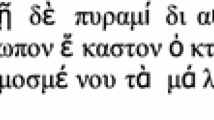Abstract
We describe the development and successful implementation of a decision support system now being used by several leading firms in the architecture and space planning industries. The system, which we call SPDS (spatial programming design system) has the following characteristics: (i) user-friendly convenience features permitting architects and space planners to operate the system without being experienced programmers; (ii) interactive capabilities allowing the user to control and to manipulate relevant parameters, orchestrating conditions to which his or her intuition provides valuable input; (iii) informative and understandable graphics, providing visual displays of interconnections that the computer itself treats in a more abstract methematical form; (iv) convenient ways to change configurations, and to carry out ‘what if’ analyses calling on the system’s decision support capabilities; (v) a collection of new methods, invisible to the user, capable of generating good solutions to the mathematical programming problems that underlie each major design component. These new methods succeed in generating high quality solutions to a collection of complex discrete, highly nonlinear problems. While these problems could only be solved in hours, or not at all, with previously existing software, the new methods obtain answers in seconds to minutes on a minicomputer. Major users, including Dalton, Dalton, Newport, and Marshal Erdwin, report numerous advantages of the system over traditional architectural design methods.
Similar content being viewed by others
References
C. Alexander,Notes of the Synthesis of Form (Harvard University Press, Cambridge, 1964).
E.S. Buffa, G.C. Armour and T.E. Vollman, Allocating facilities with CRAFT, Harvard Business Review 42, 2(1964).
C.F. Davis and M.D. Kennedy, EPS: A computer program for the evaluation of problem structure, in:Emerging Methods in Environmental Design and Planning, ed. Moore (MIT Press, 1970).
C.M. Eastman,Spatial Synthesis in Computer-Aided Building Design (Wiley, New York, 1975).
R.L. Francis and J.A. White,Facility Layout and Location: An Analytic Approach (Prentice—Hall, Englewood Cliffs, NJ, 1974).
F. Glover, Heuristics for integer programming, using surrogate constraints, Decision Sciences 8, 1(1977).
M. Held, P. Wolf and H. Crowder, Validation of subgradient optimization, Mathematical Programming 9(1974).
R. Mather,Schematic Layout Planning (CBI Publishing Co., Boston, 1977).
M. Milne, A structure-finding algorith, in:Emerging Methods in Environmental Design and Planning, ed. Moore (MIT Press, 1970).
W.J. Mitchell,Computer-Aided Architectural Design (Petrocelli Charter, New York, 1977).
C.L. Owen, DCMPOS: An algorithm for the decompostion of nondirected graphs, in:Emerging Methods in Environmental Design and Planning, ed Moore, (MIT Press, 1970).
E. Shaviv, R. Hashimshony and A. Wachman, Decomposition of a multi-cell complex a problem in physical design, DMG-DRS 2, 2(1977).
E. Shaviv, R. Hashimshony and A. Wachman, Transforming an adjacency matrix into a planar graph, Technion, Israel Institute of Technology (1979).
Author information
Authors and Affiliations
Rights and permissions
About this article
Cite this article
Glover, F., McMillan, C. & Novick, B. Interactive decision software and computer graphics for architectural and space planning. Ann Oper Res 5, 557–573 (1986). https://doi.org/10.1007/BF02739239
Issue Date:
DOI: https://doi.org/10.1007/BF02739239




